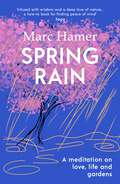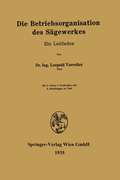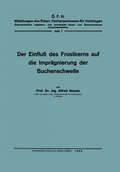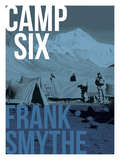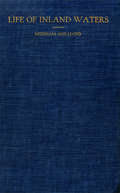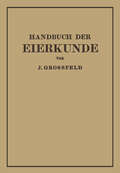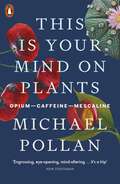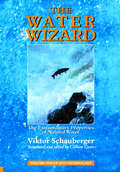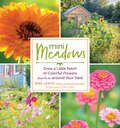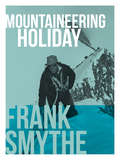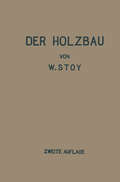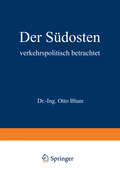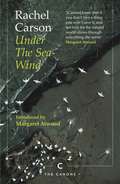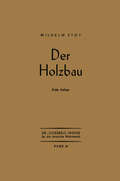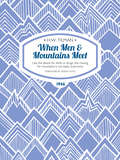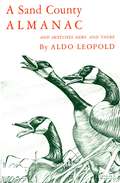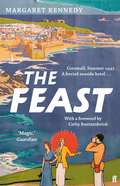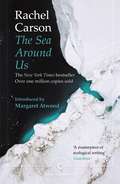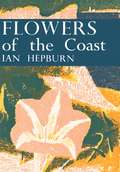- Table View
- List View
Spring Rain: A wise and life-affirming memoir about how gardens can help us heal
by Marc HamerAn inspiring and life-affirming story of a difficult childhood transformed into happy adulthood through the power of nature and gardensBeloved author Marc Hamer writes about finding refuge in his tiny back garden in this highly original story of childhood, old age, and the restorative power of gardens. As a child, he kindled a deep love of the earth by watching plants and insects and exploring the world through a stack of old encyclopaedias he found in the shed. Now an old man, he creates a garden for himself in the neglected plot behind his house.A little book with a big heart: the insights glow as vivid as a flowerbed. If you want to be inspired, or you've lost your belief in the goodness of this world, this could be for you.'A sublime meditation on life, love, nature and family, woven with the wisdom gained through a life well lived' Lee Schofield, author of Wild Fell'Patterned with Hamer's gifts for observation, compression, and tone' New Yorker'Rich and tender' New York Times'A book of great but tender power' Charles Foster, author of Being a Beast
Der Einfluß des Frostkerns auf die Imprägnierung der Buchenschwelle: (pdf)
by PROF.ING. Alfred NowakCamp Six: The 1933 Everest Expedition
by Frank SmytheFrank Smythe's Camp Six is one of the greatest Everest accounts ever written. It is the story of the 1933 Everest Expedition, in which Smythe, climbing alone after his partner Eric Shipton had turned back ill, reached a point perhaps higher than any man had done before - and some twenty years before the eventual first ascent. Rope-less, oxygen free and in terrible snow conditions, his climb was one of the greatest endeavours in the history of Everest. Camp Six is a compelling read: a gripping adventure on the highest mountain in the world and a fascinating window into early mountaineering and Himalayan exploration - including an illuminating colonial view of early travels in Tibet. It is essential reading for all those interested in Everest and in the danger and drama of those early expeditions. Frank Smythe was one of the leading mountaineers of the twentieth century, an outstanding climber who, in his short life - he died aged forty-nine -was at the centre of high-altitude mountaineering development in its early years. Author of twenty-seven immensely popular books, he was an early example of the climber as celebrity.
Life of Inland Waters: An Elementary Text Book of Fresh-Water Biology For Students
by James G. NeedhamThis work is a textbook of fresh-water life dealing with its forms, its conditions, its fitnesses, its associations, and its economic aspects. The ecologic side of fresh-water biology is emphasized. Due consideration is given to the educational, economic, sanitary, social, civic, and aesthetic aspects of the subject.Limnology in America today is in its infancy. The value of its past achievements is just beginning to be appreciated. The benefits to come from a more intensive study of water life arc just beginning to be disclosed. That there is a widespread interest is already manifest in the large number of biological stations at which limnological work is being done.We recommend this volume as a general introduction to all students and teachers of this subject.
Handbuch der Eierkunde
by J. GroßfeldDieser Buchtitel ist Teil des Digitalisierungsprojekts Springer Book Archives mit Publikationen, die seit den Anfängen des Verlags von 1842 erschienen sind. Der Verlag stellt mit diesem Archiv Quellen für die historische wie auch die disziplingeschichtliche Forschung zur Verfügung, die jeweils im historischen Kontext betrachtet werden müssen. Dieser Titel erschien in der Zeit vor 1945 und wird daher in seiner zeittypischen politisch-ideologischen Ausrichtung vom Verlag nicht beworben.
This Is Your Mind On Plants: Opium—Caffeine—Mescaline
by Michael Pollan'It's a trip - engrossing, eye-opening, mind altering' New StatesmanFrom the international bestselling author of How to Change Your Mind ('A sweeping and often thrilling chronicle of the history of psychedelics' Guardian), comes a ground-breaking exploration of our relationship with natural drugsOf all the many things humans rely on plants for, surely the most curious is our use of them to change consciousness: to stimulate, calm, or completely alter the qualities of our mental experience. In This Is Your Mind On Plants, Michael Pollan explores three very different drugs - opium, caffeine and mescaline - and throws the fundamental strangeness of our thinking about them into sharp relief. Exploring and participating in the cultures that have grown up around these drugs, while consuming (or in the case of caffeine, trying not to consume) them, Pollan reckons with the powerful human attraction to psychoactive plants, and the equally powerful taboos. In a unique blend of history, science, memoir and reportage, Pollan shines a fresh light on a subject that is all too often treated reductively. In doing so, he proves that there is much more to say about these plants than simply debating their regulation, for when we take them into our bodies and let them change our minds, we are engaging with nature in one of the most profound ways we can. This ground-breaking and singular book holds up a mirror to our fundamental human needs and aspirations, the operations of our minds and our entanglement with the natural world.
The Water Wizard – The Extraordinary Properties of Natural Water: Volume 1 Of Renowned Environmentalist Viktor Schauberger's Eco-technology Series (Eco-technology Ser. #Vol. 1)
by Viktor SchaubergerMore energy is encapsulated in every drop of good spring water than an average-sized power station is presently able to produce.Viktor Schauberger (1885–1958)Water – all life depends on it. Yet how often do we stop to consider its true significance, its essential nature? The Water Wizard, the first volume of the Eco-Technology series which presents the original, passionate and convincing research of Viktor Schauberger in translation for the first time, looks at the importance of water to our daily lives. Schauberger was a pioneering genius who combined keen observation of Nature with intuitive brilliance and a sharp engineer’s brain. One of the first genuine environmentalists, he was predicting ecological catastrophe when no-one else could see it coming. In the era of global warming, deforestation and desertification, Schauberger’s predictions are now being proven right. A fearless exponent of natural energy who revelled in doing battle with contemporary orthodox scientists, his work is enjoying a worldwide revival because he was able to convey how an understanding of Nature’s subtle energies is essential to our survival. Schauberger made a lifelong study of water – from mountain streams to river flows and from domestic supplies to advances hydraulics – developing profound and radical theories about its inherent energies, which earned him the name of ‘the Water Wizard’. According to Schauberger, water is akin to blood in the human body – the most important life-giving and energy-empowering substance on the planet. Yet, with incorrect, ignorant handling, it becomes diseased, affecting human, animal and vegetable life alike, causing physical decay and, in the case of people, their moral, mental and spiritual deterioration as well. Sadly, the same extractive and water management policies that Schauberger indicts in The Water Wizard, which brought devastation and widespread pollution in his day, are still being practiced today, leading to a revival of interest in Schauberger’s work. Themes covered in The Water Wizard include:The natural pulsation of water and how to maintain itHow minute differences in temperature affect the natural function of water in the earth, in plants and in riversHow to regulate rivers without damaging their vitality and healthThe natural conversion of sea-water into fresh waterThe consequences of sterilisation and chlorination of water. The Eco-Technology series makes available for the first time Viktor Schauberger’s original writings and passionate debates. Callum Coats has painstakingly collected, translated and edited the material for what promises to be the most definitive study yet of this extraordinary man’s life and work.The Water Wizard: Table of ContentsA Brief Introduction to the Natural Eco-Technological Theories of Viktor SchaubergerThe Nature of WaterThe Quantitative and Qualitative Deterioration of WaterThe Conduction of the Earth’s BloodTemperature and the Movement of Water and Other Unpublished Texts on River EngineeringFundamental Principles of River Regulation and Status of Temperature in Flowing WaterThe Natural Movement of Water over the Earth’s SurfaceThe Rhine and the DanubeThe Dr. Ehrenberger AffairThe Learned Scientist and the Star in the HailstoneAppendix: Patent Applications
Mini Meadows: Grow a Little Patch of Colorful Flowers Anywhere around Your Yard
by Mike LizotteCreate low-cost, low-maintenance flower-filled plots around the yard that provide habitat for pollinators, reduce mowing, and address problem areas with special plantings for shady, damp, erosion-prone, or deer-susceptible spots.
Mountaineering Holiday: An Outstanding Alpine Climbing Season, 1939
by Frank SmytheThere is no holiday like a mountaineering holiday. For eleven months the mountaineer has sighed for the mountain wind on his cheek, for the lilt of the mountain stream, for the feel of rock in his hand, for the crunch of frozen snow beneath his feet, for the smell of mist and the fragrance of alp and pine forest. 'In his spare moments he has read about mountains, pored over maps, and studied guidebooks. Then comes the day when he inspects his boots, his ice axe, and his rope. He packs his rucksack. He buys his railway ticket. The incredible has become credible. For two weeks, three weeks, or a month he will escape from civilisation and all its works; he is off to the mountains.' In Mountaineering Holiday, Frank Smythe records 'an outstanding Alpine climbing season' - his 1939 summer holiday Writing in his typically engaging style of keen observation, entertaining anecdote and remarkable knack for description, Smythe takes the reader with him on his trip into the Alps. Arriving unfit and out of practice, he gets stuck behind slower climbers and spends rainy days confined to the valleys before making an impressive number of successful ascents and historic climbs: Mont Tondu, the Aiguille de Bionnassay, the Brenva Face - and an ascent of the Innominata Ridge of Mont Blanc. There is a wonderful sense of familiarity about the book. Smythes's experiences and emotions are instantly recognisable by the modern climber, evoking memories of other trips and mountain days. And his examination of our need for mountains and wild places reaches conclusions that strike a chord with everybody who enjoys the great outdoors. Yet this is the 1930s. Mountaineering equipment and technique are in their infancy. Attitudes within climbing are markedly different to those of today and the first ascents of many major routes are still to be claimed. Europe is on the brink of war and fearful of the future. The book's final climb is made with four young Germans - mere days before World War II …
Der Holzbau
by Wilhelm StoyDieser Buchtitel ist Teil des Digitalisierungsprojekts Springer Book Archives mit Publikationen, die seit den Anfängen des Verlags von 1842 erschienen sind. Der Verlag stellt mit diesem Archiv Quellen für die historische wie auch die disziplingeschichtliche Forschung zur Verfügung, die jeweils im historischen Kontext betrachtet werden müssen. Dieser Titel erschien in der Zeit vor 1945 und wird daher in seiner zeittypischen politisch-ideologischen Ausrichtung vom Verlag nicht beworben.
Der Südosten verkehrspolitisch betrachtet
by Otto BlumDieser Buchtitel ist Teil des Digitalisierungsprojekts Springer Book Archives mit Publikationen, die seit den Anfängen des Verlags von 1842 erschienen sind. Der Verlag stellt mit diesem Archiv Quellen für die historische wie auch die disziplingeschichtliche Forschung zur Verfügung, die jeweils im historischen Kontext betrachtet werden müssen. Dieser Titel erschien in der Zeit vor 1945 und wird daher in seiner zeittypischen politisch-ideologischen Ausrichtung vom Verlag nicht beworben.
Under the Sea-Wind (Canons)
by Rachel CarsonUnder the Sea-Wind marks the beginnings of one of the most significant careers in nature writing. In it Rachel Carson celebrates the mystery and beauty of birds and sea creatures in their natural habitat, conjuring the atmosphere of the shore and the open sea and the delicately balanced, fragile struggle for life along the shoreline.
Der Holzbau
by Wilhelm StoyDieser Buchtitel ist Teil des Digitalisierungsprojekts Springer Book Archives mit Publikationen, die seit den Anfängen des Verlags von 1842 erschienen sind. Der Verlag stellt mit diesem Archiv Quellen für die historische wie auch die disziplingeschichtliche Forschung zur Verfügung, die jeweils im historischen Kontext betrachtet werden müssen. Dieser Titel erschien in der Zeit vor 1945 und wird daher in seiner zeittypischen politisch-ideologischen Ausrichtung vom Verlag nicht beworben.
When Men & Mountains Meet: Like the desire for drink or drugs, the craving for mountains is not easily overcome (H.W. Tilman: The Collected Edition)
by H.W. Tilman‘We had climbed a mountain and crossed a pass; been wet, cold, hungry, frightened, and withal happy. One more Himalayan season was over. It was time to begin thinking of the next. “Strenuousness is the immortal path, sloth is the way of death.”’First published in 1946, the scope of H.W. ‘Bill’ Tilman’s When Men and Mountains Meet is broad, covering his disastrous expedition to the Assam Himalaya, a small exploratory trip into Sikkim, and then his wartime heroics.In the thirties, Assam was largely unknown and unexplored. It proved a challenging environment for Tilman’s party, the jungle leaving the men mosquito-bitten and suffering with tropical diseases, and thwarting their mountaineering success. Sikkim proved altogether more successful. Tilman, who is once again happy and healthy, enjoys some exploratory ice climbing and discovers Abominable Snowman tracks, particularly remarkable as the creature appeared to be wearing boots—‘there is no reason why he should not have picked up a discarded pair at the German Base Camp and put them to their obvious use'.And then, in 1939, war breaks out. With good humour and characteristic understatement we hear about Tilman’s remarkable Second World War. After digging gun pits on the Belgian border and in Iraq, he was dropped by parachute behind enemy lines to fight alongside Albanian and Italian partisans. Tilman was awarded the Distinguished Service Order for his efforts—and the keys to the city of Belluno, which he helped save from occupation and destruction.Tilman’s comments on the German approach to Himalayan climbing could equally be applied to his guerrilla warfare ethos. ‘They spent a lot of time and money and lost a lot of climbers and porters, through bad luck and more often through bad judgement.’ While elsewhere the war machine rumbled on, Tilman’s war was fast, exciting, lightweight and foolhardy—and makes for gripping reading.
A Sand County Almanac: With Other Essays on Conservation from Round River (Galaxy Books)
by Aldo LeopoldFirst published in 1949 and praised in The New York Times Book Review as "a trenchant book, full of vigor and bite," A Sand County Almanac combines some of the finest nature writing since Thoreau with an outspoken and highly ethical regard for America's relationship to the land. Written with an unparalleled understanding of the ways of nature, the book includes a section on the monthly changes of the Wisconsin countryside; another part that gathers informal pieces written by Leopold over a forty-year period as he traveled through the woodlands of Wisconsin, Iowa, Arizona, Sonora, Oregon, Manitoba, and elsewhere; and a final section in which Leopold addresses the philosophical issues involved in wildlife conservation. As the forerunner of such important books as Annie Dillard's Pilgrim at Tinker Creek, Edward Abbey's Desert Solitaire, and Robert Finch's The Primal Place, this classic work remains as relevant today as it was forty years ago.
The Feast
by Margaret Kennedy Cathy RentzenbrinkWith a new foreword by Cathy Rentzenbrink, this glorious rediscovered gem exploring the mystery of a buried Cornish hotel will make you nostalgic for 1940s seaside holidays ...'The miniature charm of a Baby Austen.' Observer'Kennedy is not only a romantic but an anarchist.' Anita Brookner'Tense, touching, human, dire, and funny ... A feast indeed.' Elizabeth BowenCornwall, Midsummer 1947. Pendizack Manor Hotel has just been buried in the rubble of a collapsed cliff. Seven guests have perished, but what brought this strange assembly together for a moonlit feast before this Act of God - or Man?Over the week before the landslide, we meet the hotel guests in all their eccentric glory: the selfish aristocrat; slothful hotelier; snooping housekeeper; bereaved couple; bohemian authoress; poverty-stricken children - and as friendships form and romances blossom, sins are revealed, and the cliff cracks widen . . . Both a glorious portrait of seaside holidays in post-war Britain and a wise, witty fable, Margaret Kennedy's The Feast is a banquet indeed.'Aptly named [for] it has Miss Kennedy's narrative skill; her distinction, her grace, above all, her peculiar magic.' Guardian
The Sea Around Us (Canons)
by Rachel CarsonThe Sea Around Us is one of the most influential books ever written about the natural world. In it Rachel Carson tells the history of our oceans, combining scientific insight and poetic prose as only she can, to take us from the creation of the oceans, through their role in shaping life on Earth, to what the future holds. It was prophetic at the time it was written, alerting the world to a crisis in the climate, and it speaks to the fragility and centrality of the oceans and the life that abounds within them.
Flowers of the Coast (Collins New Naturalist Library #24)
by Ian HepburnFew parts of our British islands can compare with our sea coasts as plant hunting ground.
John Constable and the Fishers: The Record of a Friendship (Routledge Revivals)
by R B BeckettFirst published in 1952, John Constable and the Fishers is based on original letters which have never been published in full before. These have been woven into a connected narrative dealing with the friendship which existed between Constable and various members of the Fisher family, more particularly the Bishop of Salisbury (a personal friend of George III who entrusted him with the education of Princess Charlotte as heiress to the throne) and his nephew the Archdeacon of Berkshire. The Archdeacon’s letters give a picture of life in a cathedral closed and country vicarages, reminiscent of Trollope’s Barchester and Thomas Hardy’s Wessex. In return Constable confides his ideals and ambitions; and as Mr. Grigson suggests in his introduction, the encouragement he received from the Fishers may have had a decisive effect on the future of landscape art. The letters are fully annotated and are illustrated with connected works done by Constable. This book will of interest to students of history, art and literature.
John Constable and the Fishers: The Record of a Friendship (Routledge Revivals)
by R B BeckettFirst published in 1952, John Constable and the Fishers is based on original letters which have never been published in full before. These have been woven into a connected narrative dealing with the friendship which existed between Constable and various members of the Fisher family, more particularly the Bishop of Salisbury (a personal friend of George III who entrusted him with the education of Princess Charlotte as heiress to the throne) and his nephew the Archdeacon of Berkshire. The Archdeacon’s letters give a picture of life in a cathedral closed and country vicarages, reminiscent of Trollope’s Barchester and Thomas Hardy’s Wessex. In return Constable confides his ideals and ambitions; and as Mr. Grigson suggests in his introduction, the encouragement he received from the Fishers may have had a decisive effect on the future of landscape art. The letters are fully annotated and are illustrated with connected works done by Constable. This book will of interest to students of history, art and literature.
Walking the Bones of Britain: A 3 Billion Year Journey from the Outer Hebrides to the Thames Estuary
by Christopher Somerville'[Somerville's] infectious enthusiasm and wry humour infuse his journey from the Isle of Lewis to southern England, revealing our rich geological history with vibrant local and natural history.' - Observer'An illuminating take on the British landscape ... a remarkable achievement. ' - Tom Chesshyre'A meticulous exploration of the ground beneath our feet. Glorious.' Katherine Norbury'Somerville is a walker's writer.' Nicholas Crane'His writing is utterly enticing.' Country Walking...........................................................................................................................................................................................................Travelling a thousand miles and across three billion years, Christopher Somerville (walking correspondent of The Times and author of Coast, The January Man and Ships of Heaven) sets out to interrogate the land beneath our feet, and how it has affected every aspect of human history from farming to house construction, the Industrial Revolution to the current climate crisis.In his thousand-mile journey, Somerville follows the story of Britain's unique geology, travelling from the three billion year old rocks of the Isle of Lewis, formed when the world was still molten, down the map south eastwards across bogs, over peaks and past quarry pits to the furthest corner of Essex where new land is being formed by nature and man.Demystifying the sometimes daunting technicalities of geology with humour and a characteristic lightness of touch, Somerville's book tells a story of humanity's reckless exploitation and a lemming-like surge towards self-annihilation but also shows seeds of hope as we learn how we might work with geology to avert a climate catastrophe.It cannot fail to change the way you see the world beyond your door.
The Comstocks of Cornell: John Henry Comstock and Anna Botsford Comstock
by Anna Botsford ComstockThe Comstocks of Cornell is the autobiography written by naturalist educator Anna Botsford Comstock about her life and her husband's, entomologist John Henry Comstock—both prominent figures in the scientific community and in Cornell University history.A first edition was published in 1953, but it omitted key Cornellians, historical anecdotes, and personal insights. Karen Penders St. Clair's twenty-first century edition returns Mrs. Comstock's voice to her book by rekeying her entire manuscript as she wrote it, and preserving the memories of the personal and professional lives of the Comstocks that she had originally intended to share. The book includes a complete epilogue of the Comstocks' last years and fills in gaps from the 1953 edition. Described as serious legacy work, the book is an essential part of Cornell University history and an important piece of Cornell University Press history.
The Nation Looks at its Resources (Routledge Revivals)
by Henry JarrettThe Nation Looks at its Resources records the key points of the Mid-Century Conference on Resources for the Future held in Washington in 1953. Originally published in 1954, this report reveals the concern felt by those attending the conference about the mounting pressure on our resources from the growing population and expanding Economy. Rather than taking a specific view point, the discussions cover a wide range of resource issues from multiple angles with an unintended emphasis on the need for research, education and cooperation to better understand the resource issues facing the U.S and the rest of the world after World War II. This title will be of interest to students of Environmental Studies.
The Nation Looks at its Resources (Routledge Revivals)
by Henry JarrettThe Nation Looks at its Resources records the key points of the Mid-Century Conference on Resources for the Future held in Washington in 1953. Originally published in 1954, this report reveals the concern felt by those attending the conference about the mounting pressure on our resources from the growing population and expanding Economy. Rather than taking a specific view point, the discussions cover a wide range of resource issues from multiple angles with an unintended emphasis on the need for research, education and cooperation to better understand the resource issues facing the U.S and the rest of the world after World War II. This title will be of interest to students of Environmental Studies.
